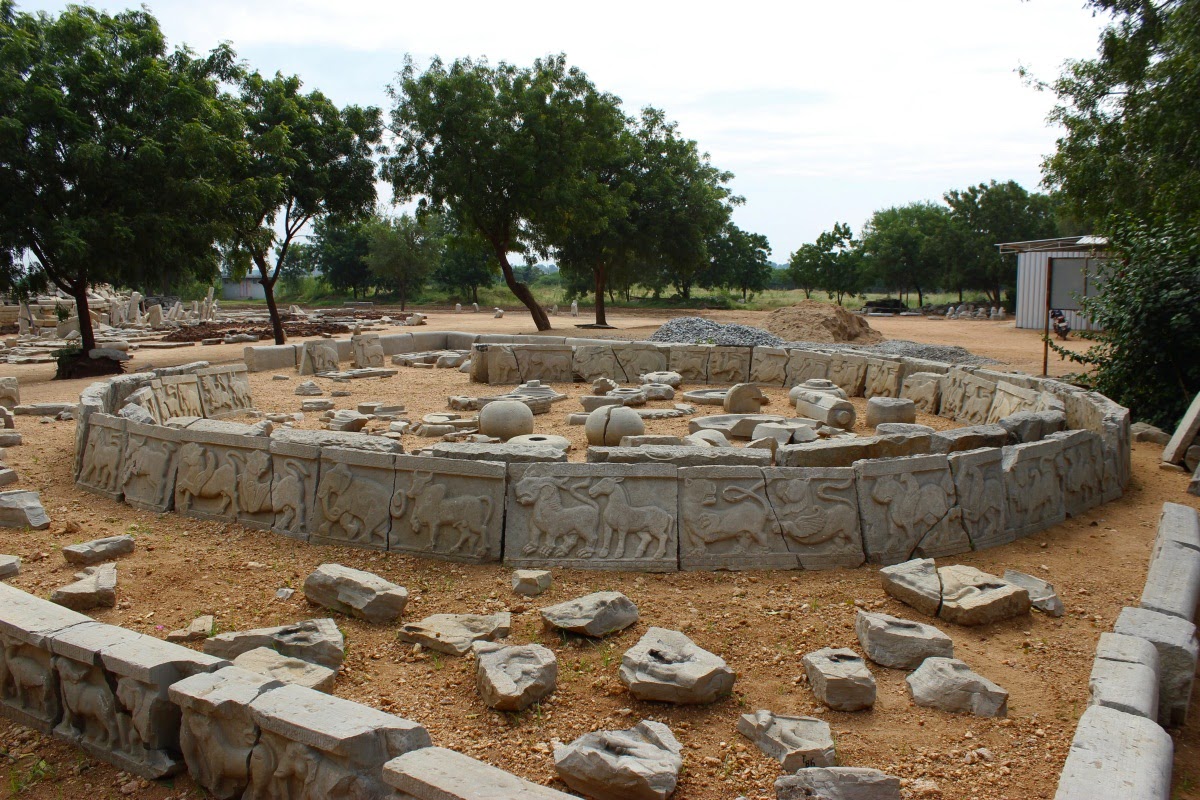Sannati Buddhist Stupa – Karnataka

Address
Sannati Buddhist Stupa – Sannati, Chitapur taluk, Gulbarga District, Karnataka
Diety
Buddha
Introduction
Buddhism was found across many excavations in Karnataka the one at Kanganahalli in Gulbarga district. Located at a distance of approximately 2.5 km from the temple of Chandrala Parameshwari at Sannati lies the most richly endowed Buddhist site excavated by the Archaeological Survey of India.
Puranic Significance
The remains of a Maha-Stupa, which is unique in several aspects, were brought to light through excavations at Kanaganahalli (forming part of Sannati) by the Archaeological Survey of India during the years 1994-2001. It is referred to an Adholoka Maha-Chaitya (The great stupa of the netherlands) in the inscriptions. It is a well developed stupa constructed in locally available limestone with elaborate ornamentation, ayaka platforms in the cardinal directions. The vedika (drum) anda (dome) portions were built of heavy, wedge shaped blocks of limestone and the inner core was filled by alternate layers of rubble and earth. The stupa measures nearly 22m in diameter (at the railing) and rose to a height of 17m. The Stupa has shown at least three constructional phases- via, Maurya, Early Satavahana and Later Satavahana periods, datable from 3rd century BC to 3rd century AD. As many as 10 small and big brick structures in the form of votive Stupas, chaitya – grihas, pavilions for accommodating sculptures and Buddha-padas and the plan of a vihara-complex are also laid bare around the Stupa. These structures appear to have been destroyed due to severe earthquake. In addition to the structural remains, as many as 60 dome-slabs with exuberant sculptural rendering of selected Jataka stories, main events in the life of the Master, portraits of Asoka – the Mauryan emperor and more than Satavahana monarchs and certain unique depictions of Buddhist 72 drum-slabs decorated with variety of dharma-chakras, Stupas, the first sermon, Bodhi tree, Naga Muchulinda, vihara complexes including Jetavana are discovered. More than 10 inscribed sculptures of the Buddha in round, of which two are standing and others, are seated; over a dozen ornate Buddha-padas are also found. Besides fragments of ayaka-pillars, umbrella stones and shafts, parts of sculptures of Yakshas and lion, the innumerable carved architectural members of the railing and other parts of the Stupa have also been unearthed. Significantly the excavations have yielded more than 250 Brahmi inscriptions with varied paleographical features. The magnificent Stupa, the sculptural fragments, the inscriptions, coins and other antiquities from Kanaganahalli throw immense fresh light on the historical, cultural, religious and chronological aspects of the Maurya-Satavahana times besides the spread of Buddhism, ramification and standardization of Buddhist art, architecture and iconography by providing clinching evidences.
Century/Period/Age
3rd century BC
Managed By
Archaeological Survey of India (ASI)
Nearest Bus Station
Gulbarga Central
Nearest Railway Station
Nalwar Railway Station
Nearest Airport
Mysore




